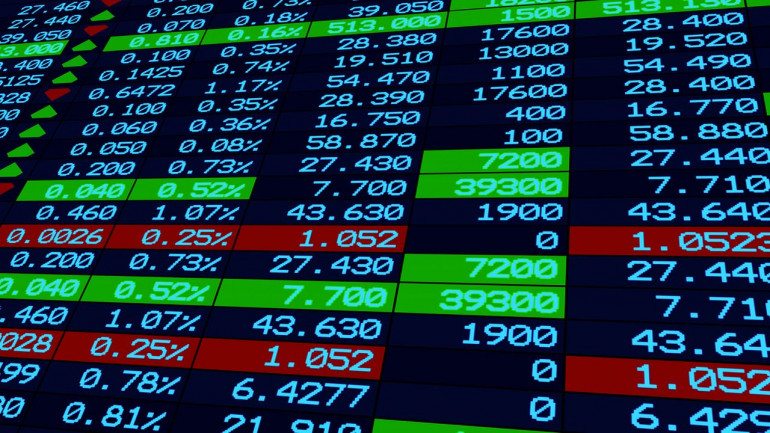$EFLN: The world is in great disequilibrium, gold
Post# of 99572

Any fiscal stimulus on the backdrop of low employment may be inflationary. That is to say that expectation of higher real rates may soon fizzle out. However, we may end up having a scenario of higher nominal rates accompanied with runaway inflation; the price of gold may rise well in that environment.

By Chirag Mehta
Although gold prices ended on a flatter note, it was indeed highly volatile. Amid expectations of a hawkish Fed, gold prices were set in a free fall dipping to test the $1200 an ounce levels. However, the Fed appeared more accommodative and less aggressive in their posture leading to “V-shaped” recovery in prices.
What also helped gold was the inability of the Trump administration to get approval on the health care bill casting doubts on his various other ‘meaningful’ campaign promises.
This has been the basis of the sound rally in equity markets over the past few months. The evidence of first cracks in the armor led to some sell off in equities and bids under gold. All in all, gold prices ended the month with an insignificant gain of +0.08 percent.
Although the first quarter performance is dwarfed when we compare it to the first quarter performance of last year, the 8.4 percent gain is absolutely respectable.
Statements made by Fed Chairperson Janet Yellen following the monetary policy meeting alleviated fears that the Fed might set a more hawkish and aggressive stance that accelerates the pace of rate hikes this year.
On the contrary, Fed sounded more dovish and that took the pressure of from gold prices. Following the Fed's anticipated 25 basis point rate hike at the March meeting, gold immediately rose by over $20, reflecting that the decision was already built into the price.
The business and consumer confidence numbers in the US have surged to multi-year highs. These numbers suggest that businessmen, manufacturers, and consumers are extremely gung-ho on economic prospects and thereby on the GDP growth.
This apparent bullishness on the economy stems from their bets that Trump promised tax cuts, infrastructure spending and rationalization of regulations that will hopefully help businesses grow and thereby make America great again.
However, data on the ground is not so encouraging and provides a strong reality check regarding the current state of economic activity.
The US economy slowed down more than expected in the fourth quarter of 2016. Gross domestic product increased at a lackluster 2.1 percent annual rate at the end of last year.
For all of 2016, the economy grew only 1.6 percent, which was the weakest since 2011. And despite all the zooming confidence levels, forecast from the Atlanta Fed's GDP Now model is poised for just 0.9 percent growth for the first quarter of 2017.
That's not all. Look at the January Durable Goods Report, which met expectations at 1.8 percent. However, excluding aircraft, transportation equipment fell by 0.2 percent, well below the estimate of a 0.2 percent gain. Core capital goods showed a 0.4 percent decline in orders.
After showing growth for the last 3 months, current reading ends of a much-envisaged business investment boom as suggested by the business confidence readings. Construction spending fell by a sharp 1.0 percent in January compared to expectations of 0.6 percent increase.
Personal spending increased by only 0.1 percent in February below consensus estimates of 0.2 percent. Also, industrial production for the month of February didn't show any growth at all.
Retail sales increased by just 0.1 percent in February marking the smallest gain in the past 6 months. Looking at economic data, it seems that the main reason for Fed's reluctance stems from the real state of the economy.
Fund Outlook:
“Trump trade” is primarily based upon unrealized promises and commitments. The Republicans in Congress are in a deadlock with Democrats and Libertarians over raising the debt ceiling, and they can't seem to get out of their own way on health care and tax reform.
The stock market has priced in perfection coming from the new Administration. Unless Donald Trump can quickly convert some of his promises on tax and regulatory front, U.S equities look ripe for a meaningful correction.
Since the US election, the price of gold was under pressure from rising real interest rates as inflation expectations didn't keep pace with the sudden increase in bond yields. It was natural that this euphoria will cede to realism, the US Fed won't be aggressive enough until they see runaway inflation.
We also suggested that any fiscal stimulus on the backdrop of low employment may be inflationary. That is to say that expectation of higher real rates may soon fizzle out. However, we may end up having a scenario of higher nominal rates accompanied with runaway inflation; the price of gold may rise well in that environment.
The Fed will only raise rates if the market delivers a rate hike on a silver platter. We have argued that the Fed is and continues to be 'behind the curve' i.e. is raising rates more slowly than building inflationary pressures.
In the short term though, gold remains vulnerable to the downside as hopes surrounding the Fed reflationary policies continue to thrive. This promotes the case for expectations on further monetary tightening from the Fed. We believe that the fundamental outlook for the gold market may not be so encouraging until people expect Trumps reflationary forces to mend the economy.
But, as markets lose their faith in the pro-growth policies of Trump or its inability to get consensus on its side, it could lead to turmoil in financial markets given that equity markets are priced to that perfection; it will force the Fed to adopt a more dovish stance and gold should start moving northwards.
What could prepone gold’s ascent would be Trump's aggressive foreign and protectionist policies that can cause turmoil in currency and asset markets and this uncertainty would drive people to assets like gold.
Geopolitical risk prospects, which have escalated this year due to the unconventional and protectionist policies that Donald Trump's administration may undertake, combined with uncertainty surrounding Brexit and rise of populist politics in Europe, all these would be supportive for gold this year and limit any downsides we see in the near term.
The world is in great disequilibrium, both with respect to the global economy and geopolitics as well. There exist more uncertainties than certainties in the global macroeconomic environment of which Trump's presidency is a big unknown. We believe that barring the near term, gold prices should start moving gradually upwards in 2017.
Disclaimer: The author is Senior Fund Manager - Alternative Investments at Quantum AMC. The views and investment tips expressed by investment experts on moneycontrol.com are their own and not that of the website or its management. Moneycontrol.com advises users to check with certified experts before taking any investment decisions.
http://www.moneycontrol.com/news/business/mar...55155.html
 (0)
(0) (0)
(0)